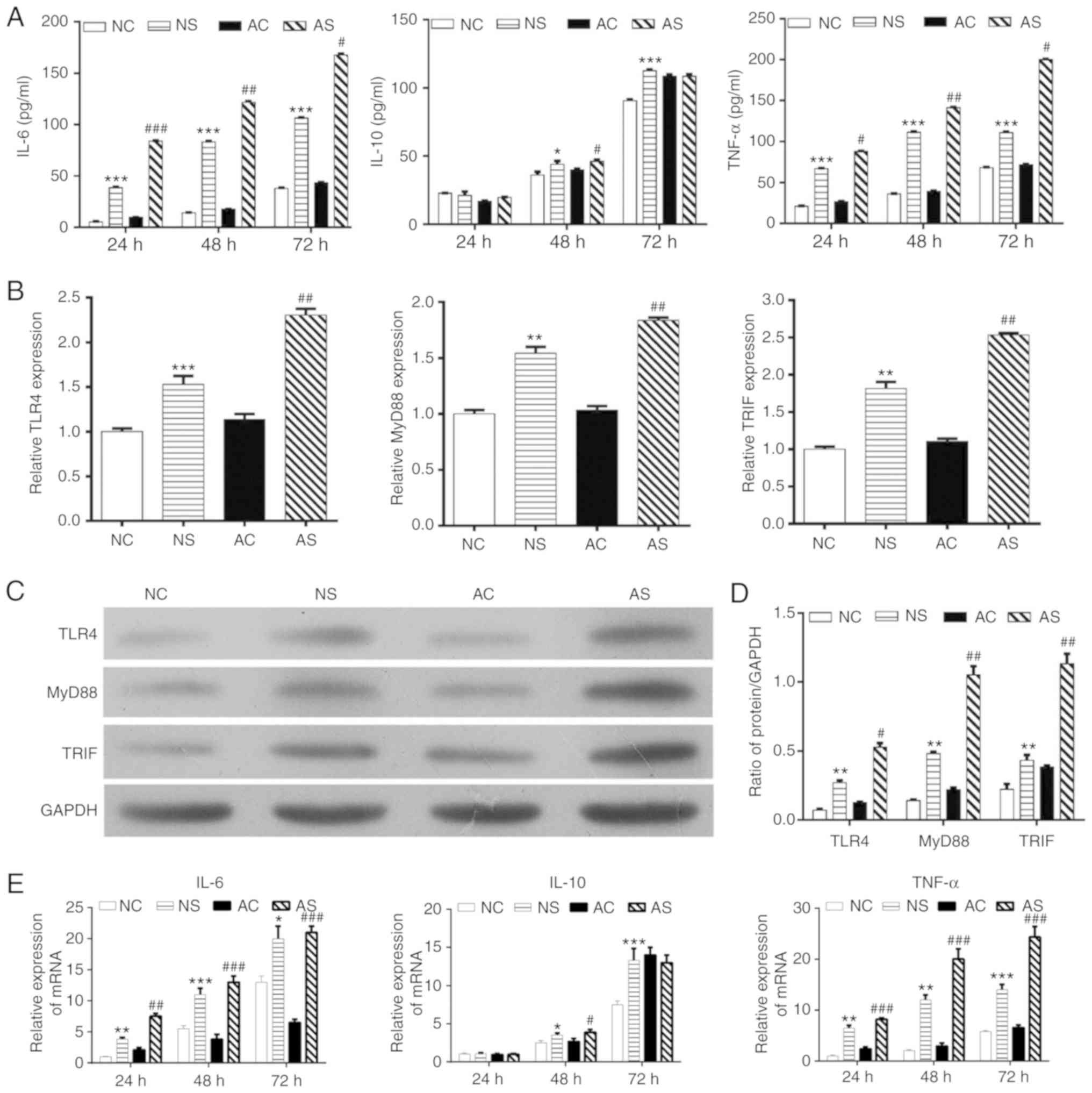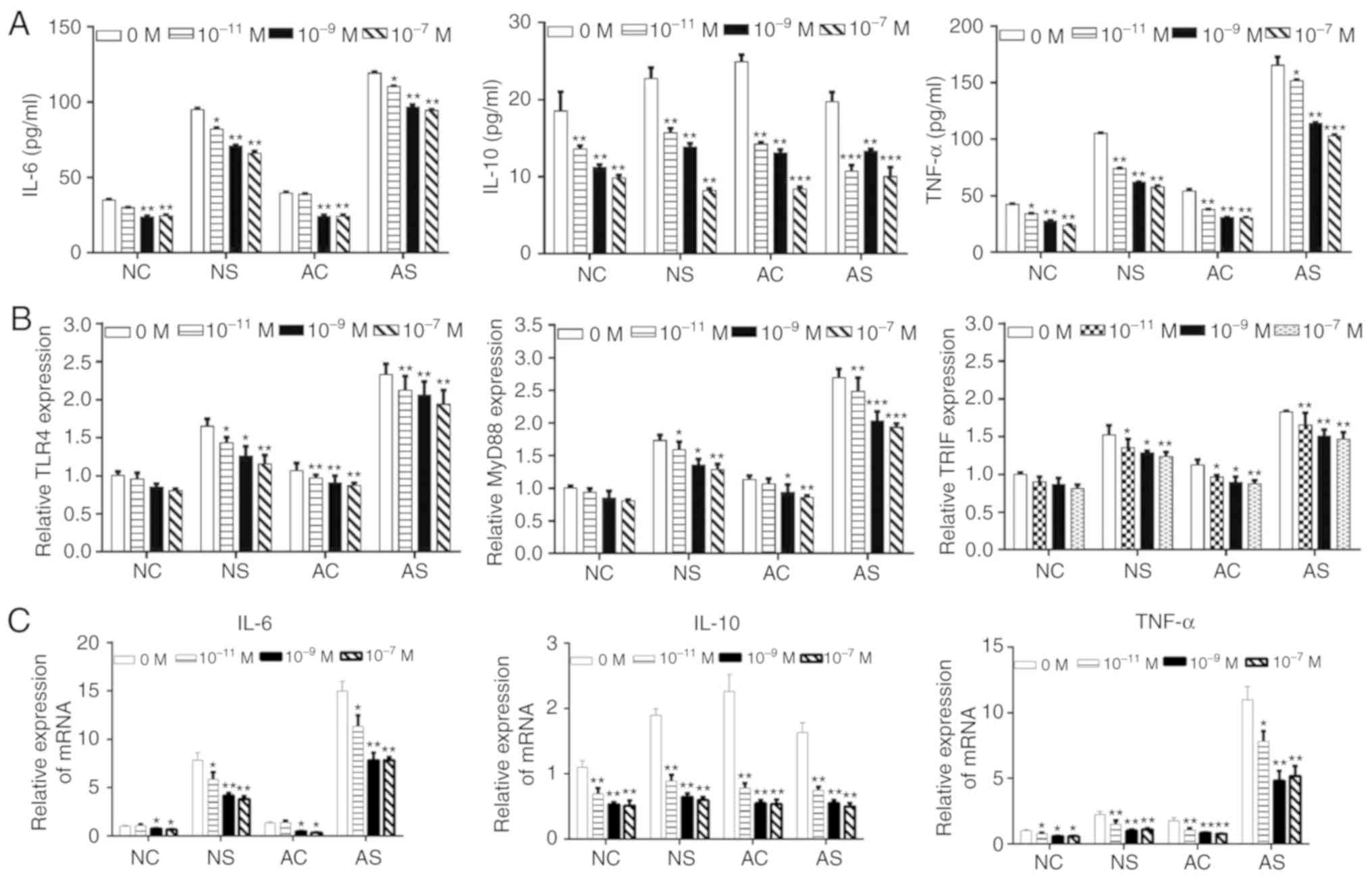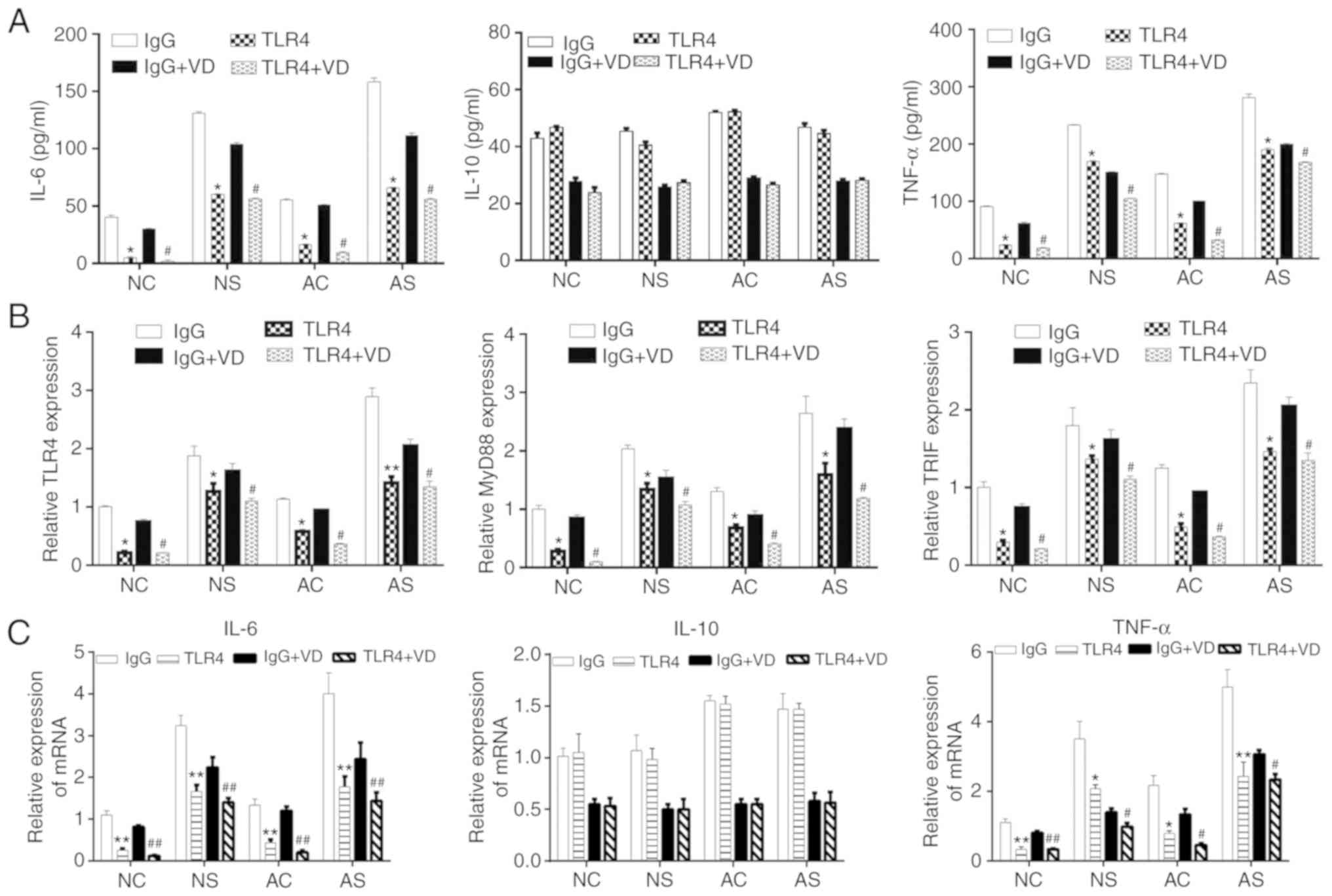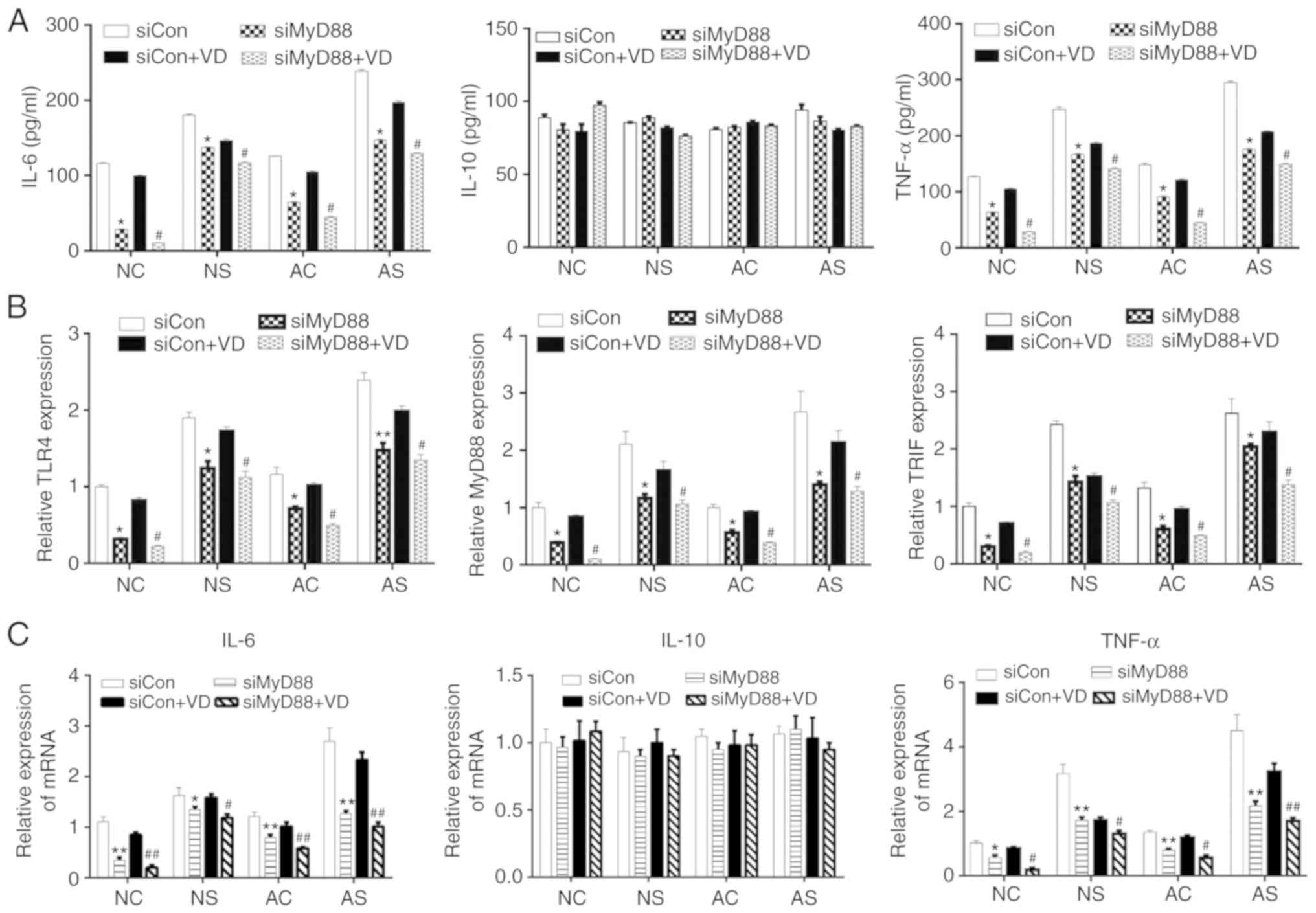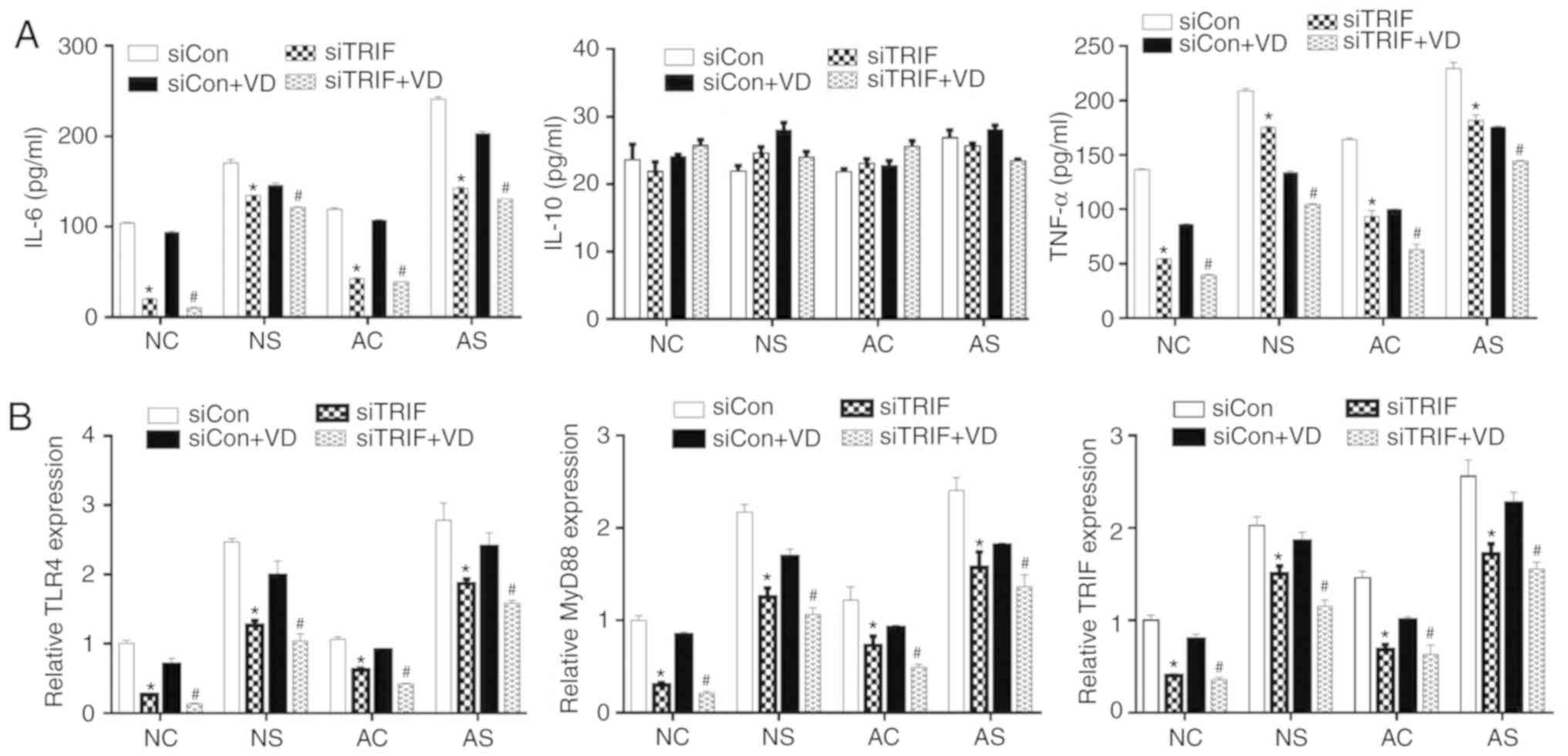|
1
|
Rivers E, Nguyen B, Havstad S, Ressler J,
Muzzin A, Knoblich B, Peterson E and Tomlanovich M; Early
Goal-Directed Therapy Collaborative Group: Early goal-directed
therapy in the treatment of severe sepsis and septic shock. N Engl
J Med. 345:1368–1377. 2001. View Article : Google Scholar
|
|
2
|
Waydhas C, Nast-Kolb D, Jochum M, Trupka
A, Lenk S, Fritz H, Duswald KH and Schweiberer L: Inflammatory
mediators, infection, sepsis, and multiple organ failure after
severe trauma. Arch Surg. 127:460–467. 1992. View Article : Google Scholar : PubMed/NCBI
|
|
3
|
Barber RC, Chang LY, Arnoldo BD, Purdue
GF, Hunt JL, Horton JW and Aragaki CC: Innate immunity SNPs are
associated with risk for severe sepsis after burn injury. Clin Med
Res. 4:250–255. 2006. View Article : Google Scholar
|
|
4
|
Aird WC: The role of the endothelium in
severe sepsis and multiple organ dysfunction syndrome. Blood.
101:3765–3777. 2003. View Article : Google Scholar : PubMed/NCBI
|
|
5
|
Bar-Or D, Carrick MM, Mains CW, Rael LT,
Slone D and Brody EN: Sepsis, oxidative stress, and hypoxia: Are
there clues to better treatment? Redox Rep. 20:193–197. 2015.
View Article : Google Scholar : PubMed/NCBI
|
|
6
|
Kaukonen KM, Bailey M, Suzuki S, Pilcher D
and Bellomo R: Mortality related to severe sepsis and septic shock
among critically ill patients in Australia and New Zealand,
2000-2012. JAMA. 311:1308–1316. 2014. View Article : Google Scholar : PubMed/NCBI
|
|
7
|
Holick MF: Vitamin D deficiency. N Engl J
Med. 357:266–281. 2007. View Article : Google Scholar : PubMed/NCBI
|
|
8
|
Ginde AA, Camargo CA Jr and Shapiro NI:
Vitamin D insufficiency and sepsis severity in emergency department
patients with suspected infection. Acad Emerg Med. 18:551–554.
2011. View Article : Google Scholar : PubMed/NCBI
|
|
9
|
Jeng L, Yamshchikov AV, Judd SE, Blumberg
HM, Martin GS, Ziegler TR and Tangpricha V: Alterations in vitamin
D status and anti-microbial peptide levels in patients in the
intensive care unit with sepsis. J Transl Med. 7:282009. View Article : Google Scholar : PubMed/NCBI
|
|
10
|
Cecchi A, Bonizzoli M, Douar S, Mangini M,
Paladini S, Gazzini B, Degl'Innocenti S, Linden M, Zagli G and
Peris A: Vitamin D deficiency in septic patients at ICU admission
is not a mortality predictor. Minerva Anestesiol. 77:1184–1189.
2011.PubMed/NCBI
|
|
11
|
Moller S, Laigaard F, Olgaard K and
Hemmingsen C: Effect of 1,25-dihydroxy-vitamin D3 in experimental
sepsis. Int J Med Sci. 4:190–195. 2007. View Article : Google Scholar : PubMed/NCBI
|
|
12
|
Hewison M, Zehnder D, Chakraverty R and
Adams JS: Vitamin D and barrier function: A novel role for
extra-renal 1 alpha-hydroxylase. Mol Cell Endocrinol. 215:31–38.
2004. View Article : Google Scholar : PubMed/NCBI
|
|
13
|
Matsumoto M, Kikkawa S, Kohase M, Miyake K
and Seya T: Establishment of a monoclonal antibody against human
Toll-like receptor 3 that blocks double-stranded RNA-mediated
signaling. Biochem Biophys Res Commun. 293:1364–1369. 2002.
View Article : Google Scholar : PubMed/NCBI
|
|
14
|
Kawasaki T and Kawai T: Toll-like receptor
signaling pathways. Front Immunol. 5:4612014. View Article : Google Scholar : PubMed/NCBI
|
|
15
|
Akira S and Takeda K: Toll-like receptor
signalling. Nat Rev Immunol. 4:499–511. 2004. View Article : Google Scholar : PubMed/NCBI
|
|
16
|
Rathinam VA, Appledorn DM, Hoag KA,
Amalfitano A and Mansfield LS: Campylobacter jejuni-induced
activation of dendritic cells involves cooperative signaling
through Toll-like receptor 4 (TLR4)-MyD88 and TLR4-TRIF axes.
Infect Immun. 77:2499–2507. 2009. View Article : Google Scholar : PubMed/NCBI
|
|
17
|
Medzhitov R, Preston-Hurlburt P, Kopp E,
Stadlen A, Chen C, Ghosh S and Janeway CA Jr: MyD88 is an adaptor
protein in the hToll/IL-1 receptor family signaling pathways. Mol
Cell. 2:253–258. 1998. View Article : Google Scholar : PubMed/NCBI
|
|
18
|
Yamamoto M and Akira S: TIR
domain-containing adaptors regulate TLR-mediated signaling
pathways. Nihon Rinsho. 62:2197–2203. 2004.In Japanese. PubMed/NCBI
|
|
19
|
Yamamoto M, Sato S, Hemmi H, Hoshino K,
Kaisho T, Sanjo H, Takeuchi O, Sugiyama M, Okabe M, Takeda K and
Akira S: Role of adaptor TRIF in the MyD88-independent toll-like
receptor signaling pathway. Science. 301:640–643. 2003. View Article : Google Scholar : PubMed/NCBI
|
|
20
|
Horng T, Barton GM and Medzhitov R: TIRAP:
An adapter molecule in the Toll signaling pathway. Nat Immunol.
2:835–841. 2001. View Article : Google Scholar : PubMed/NCBI
|
|
21
|
Shalova IN, Kajiji T, Lim JY, Gómez-Piña
V, Fernández-Ruíz I, Arnalich F, Iau PT, López-Collazo E, Wong SC
and Biswas SK: CD16 regulates TRIF-dependent TLR4 response in human
monocytes and their subsets. J Immunol. 188:3584–3593. 2012.
View Article : Google Scholar : PubMed/NCBI
|
|
22
|
Castanheira FVES, de Lima KA, Cebinelli
GCM, Sônego F, Kanashiro A, Colon DF, Borges V, Czaikoski PG, Mota
JM, Cunha TM, et al: CCR5-Positive inflammatory monocytes are
crucial for control of sepsis. Shock Dec. 7:2018.Epub ahead of
print.
|
|
23
|
Medzhitov R, Preston-Hurlburt P and
Janeway CA Jr: A human homologue of the Drosophila Toll protein
signals activation of adaptive immunity. Nature. 388:394–397. 1997.
View Article : Google Scholar : PubMed/NCBI
|
|
24
|
Akira S: Innate immunity to pathogens:
Diversity in receptors for microbial recognition. Immunol Rev.
227:5–8. 2009. View Article : Google Scholar : PubMed/NCBI
|
|
25
|
Rosadini CV, Zanoni I, Odendall C, Green
ER, Paczosa MK, Philip NH, Brodsky IE, Mecsas J and Kagan JC: A
single bacterial immune evasion strategy dismantles both MyD88 and
TRIF signaling pathways downstream of TLR4. Cell Host Microbe.
18:682–693. 2015. View Article : Google Scholar : PubMed/NCBI
|
|
26
|
Bjorkbacka H, Fitzgerald KA, Huet F, Li X,
Gregory JA, Lee MA, Ordija CM, Dowley NE, Golenbock DT and Freeman
MW: The induction of macrophage gene expression by LPS
predominantly utilizes Myd88-independent signaling cascades.
Physiol Genomics. 19:319–330. 2004. View Article : Google Scholar : PubMed/NCBI
|
|
27
|
Kawai T, Adachi O, Ogawa T, Takeda K and
Akira S: Unresponsiveness of MyD88-deficient mice to endotoxin.
Immunity. 11:115–122. 1999. View Article : Google Scholar : PubMed/NCBI
|
|
28
|
Diomede F, Zingariello M, Cavalcanti MFXB,
Merciaro I, Pizzicannella J, De Isla N, Caputi S, Ballerini P and
Trubiani O: MyD88/ERK/NFkB pathways and pro-inflammatory cytokines
release in periodontal ligament stem cells stimulated by
Porphyromonas gingivalis. Eur J Histochem. 61:27912017.
|
|
29
|
Cheong C, Matos I, Choi JH, Dandamudi DB,
Shrestha E, Longhi MP, Jeffrey KL, Anthony RM, Kluger C, Nchinda G,
et al: Microbial stimulation fully differentiates monocytes to
DC-SIGN/CD209(+) dendritic cells for immune T cell areas. Cell.
143:416–429. 2010. View Article : Google Scholar : PubMed/NCBI
|
|
30
|
Murillo G, Nagpal V, Tiwari N, Benya RV
and Mehta RG: Actions of vitamin D are mediated by the TLR4 pathway
in inflammation-induced colon cancer. J Steroid Biochem Mol Biol.
121:403–407. 2010. View Article : Google Scholar : PubMed/NCBI
|
|
31
|
Sadeghi K, Wessner B, Laggner U, Ploder M,
Tamandl D, Friedl J, Zügel U, Steinmeyer A, Pollak A, Roth E, et
al: Vitamin D3 down-regulates monocyte TLR expression and triggers
hypo-responsiveness to pathogen-associated molecular patterns. Eur
J Immunol. 36:361–370. 2006. View Article : Google Scholar : PubMed/NCBI
|
|
32
|
Livak KJ and Schmittgen TD: Analysis of
relative gene expression data using real-time quantitative PCR and
the 2(-Delta Delta C(T)) method. Methods. 25:402–408. 2001.
View Article : Google Scholar
|
|
33
|
Giannoni E, Guignard L, Knaup Reymond M,
Perreau M, Roth-Kleiner M, Calandra T and Roger T: Estradiol and
progesterone strongly inhibit the innate immune response of
mononuclear cells in newborns. Infect Immun. 79:2690–2698. 2011.
View Article : Google Scholar : PubMed/NCBI
|
|
34
|
Manion M, Hullsiek KH, Wilson EMP, Rhame
F, Kojic E, Gibson D, Hammer J, Patel P, Brooks JT, Baker JV, et
al: Vitamin D deficiency is associated with IL-6 levels and
monocyte activation in HIV-infected persons. PLoS One.
12:e01755172017. View Article : Google Scholar : PubMed/NCBI
|
|
35
|
Wei R and Christakos S: Mechanisms
underlying the regulation of innate and adaptive immunity by
vitamin D. Nutrients. 7:8251–8260. 2015. View Article : Google Scholar : PubMed/NCBI
|
|
36
|
Gogos CA, Drosou E, Bassaris HP and
Skoutelis A: Pro- versus anti-inflammatory cytokine profile in
patients with severe sepsis: A marker for prognosis and future
therapeutic options. J Infect Dis. 181:176–180. 2000. View Article : Google Scholar
|
|
37
|
Pinsky MR, Vincent JL, Deviere J, Alegre
M, Kahn RJ and Dupont E: Serum cytokine levels in human septic
shock Relation to multiple-system organ failure and mortality.
Chest. 103:565–575. 1993. View Article : Google Scholar : PubMed/NCBI
|
|
38
|
Parrillo JE, Parker MM, Natanson C,
Suffredini AF, Danner RL, Cunnion RE and Ognibene FP: Septic shock
in humans. Advances in the understanding of pathogenesis,
cardiovascular dysfunction, and therapy. Ann Intern Med.
113:227–242. 1990. View Article : Google Scholar : PubMed/NCBI
|
|
39
|
Chawla LS, Seneff MG, Nelson DR, Williams
M, Levy H, Kimmel PL and Macias WL: Elevated plasma concentrations
of IL-6 and elevated APACHE II score predict acute kidney injury in
patients with severe sepsis. Clin J Am Soc Nephrol. 2:22–30. 2007.
View Article : Google Scholar : PubMed/NCBI
|
|
40
|
Mira JP, Cariou A, Grall F, Delclaux C,
Losser MR, Heshmati F, Cheval C, Monchi M, Teboul JL, Riché F, et
al: Association of TNF2, a TNF-alpha promoter polymorphism, with
septic shock susceptibility and mortality: A multicenter study.
JAMA. 282:561–568. 1999. View Article : Google Scholar : PubMed/NCBI
|
|
41
|
Haveman JW, Muller Kobold AC, Tervaert JW,
van den Berg AP, Tulleken JE, Kallenberg CG and The TH: The central
role of monocytes in the pathogenesis of sepsis: Consequences for
immunomonitoring and treatment. Neth J Med. 55:132–141. 1999.
View Article : Google Scholar : PubMed/NCBI
|
|
42
|
Li YP, Yu SL, Huang ZJ, Huang J, Pan J,
Feng X, Zhang XG, Wang JH and Wang J: An impaired inflammatory
cytokine response to gram-negative LPS in human neonates is
associated with the defective TLR-mediated signaling pathway. J
Clin Immunol. 35:218–226. 2015. View Article : Google Scholar : PubMed/NCBI
|
|
43
|
Watkins RR, Yamshchikov AV, Lemonovich TL
and Salata RA: The role of vitamin D deficiency in sepsis and
potential therapeutic implications. J Infect. 63:321–326. 2011.
View Article : Google Scholar : PubMed/NCBI
|
|
44
|
Takeda K and Akira S: TLR signaling
pathways. Semin Immunol. 16:3–9. 2004. View Article : Google Scholar : PubMed/NCBI
|
|
45
|
Zhou S, Wang G and Zhang W: Effect of
TLR4/MyD88 signaling pathway on sepsis-associated acute respiratory
distress syndrome in rats, via regulation of macrophage activation
and inflammatory response. Exp Ther Med. 15:3376–3384.
2018.PubMed/NCBI
|
|
46
|
Huang C, Pan L, Lin F, Dai H and Fu R:
Monoclonal antibody against Toll-like receptor 4 attenuates
ventilator-induced lung injury in rats by inhibiting MyD88- and
NF-kappaB-dependent signaling. International Int J Mol Med.
39:693–700. 2017. View Article : Google Scholar
|
|
47
|
Chen Y, Liu W, Sun T, Huang Y, Wang Y, Deb
DK, Yoon D, Kong J, Thadhani R and Li YC: 1,25-Dihydroxyvitamin D
promotes negative feedback regulation of TLR signaling via
targeting microRNA-155-SOCS1 in macrophages. J Immunol.
190:3687–3695. 2013. View Article : Google Scholar : PubMed/NCBI
|
|
48
|
Hegyi Z, Zwicker S, Bureik D, Peric M,
Koglin S, Batycka-Baran A, Prinz JC, Ruzicka T, Schauber J and Wolf
R: Vitamin D analog calcipotriol suppresses the Th17
cytokine-induced proinflammatory S100 'alarmins' psoriasin (S100A7)
and koebnerisin (S100A15) in psoriasis. J Invest Dermatol.
132:1416–1424. 2012. View Article : Google Scholar : PubMed/NCBI
|
|
49
|
White JH: Vitamin D signaling, infectious
diseases, and regulation of innate immunity. Infect Immun.
76:3837–3843. 2008. View Article : Google Scholar : PubMed/NCBI
|
















